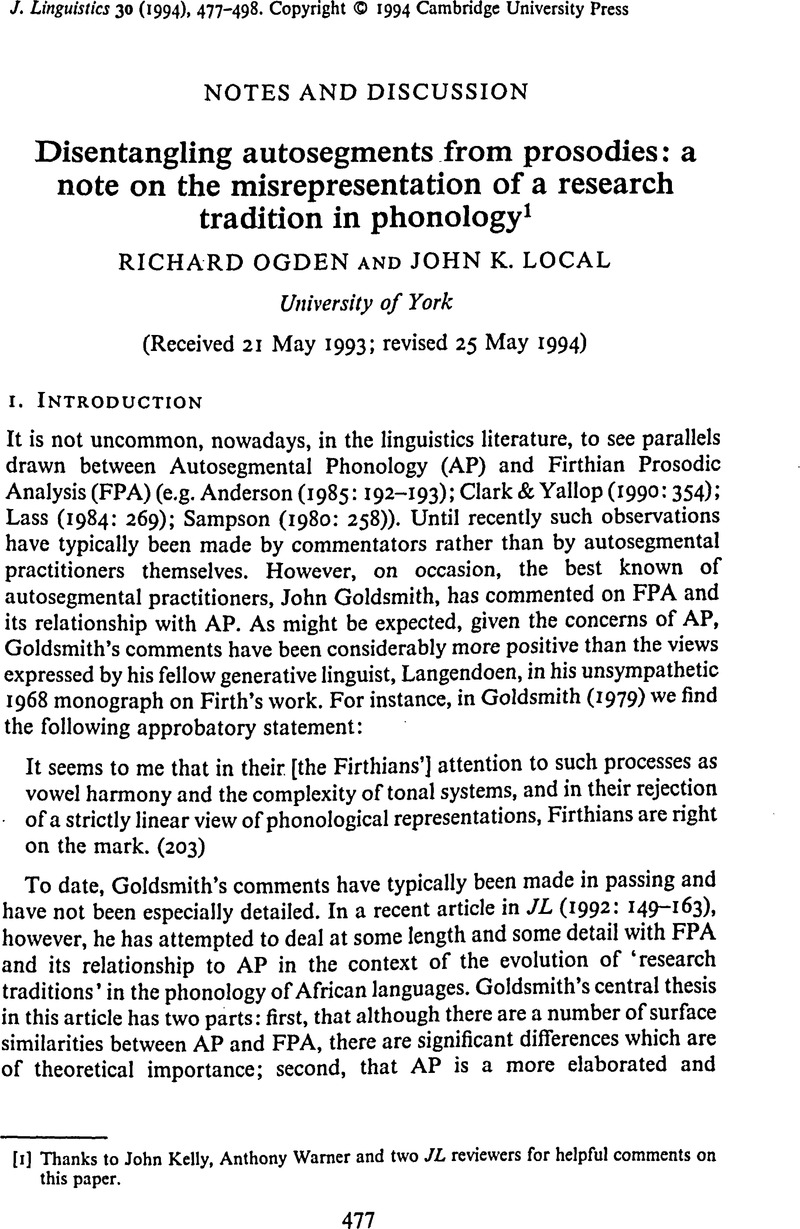Crossref Citations
This article has been cited by the following publications. This list is generated based on data provided by Crossref.
Local, John
1996.
John Laver, Principles of phonetics. (Cambridge Textbooks in Linguistics.) Cambridge: Cambridge University Press, 1994. Pp. xxviii+502 appendices..
Journal of Linguistics,
Vol. 32,
Issue. 2,
p.
527.
Hawkins, Sarah
2003.
Roles and representations of systematic fine phonetic detail in speech understanding.
Journal of Phonetics,
Vol. 31,
Issue. 3-4,
p.
373.
Ogden, Richard
and
Kelly, John
2003.
Carnochan, Scott & Whitley's Prosodic Analysis of French Regular Verbs.
Transactions of the Philological Society,
Vol. 101,
Issue. 1,
p.
57.
Local, John
2003.
Variable domains and variable relevance: interpreting phonetic exponents.
Journal of Phonetics,
Vol. 31,
Issue. 3-4,
p.
321.
Ogden, R.
2006.
Encyclopedia of Language & Linguistics.
p.
485.
Shore, Susanna
2010.
Handbook of Pragmatics.
p.
1.
HAWKINS, S
2011.
Phonetic perspectives on modelling information in the speech signal.
Sadhana,
Vol. 36,
Issue. 5,
p.
555.
Reed, Beatrice Szczepek
2012.
Pragmatics and Prosody in English Language Teaching.
Vol. 15,
Issue. ,
p.
147.
2014.
Phonological Development.
p.
245.
2014.
Phonological Development.
p.
277.
Sicoli, Mark A
Stivers, Tanya
Enfield, NJ
and
Levinson, Stephen C
2015.
Marked Initial Pitch in Questions Signals Marked Communicative Function.
Language and Speech,
Vol. 58,
Issue. 2,
p.
204.
2016.
Corpus Stylistics as Contextual Prosodic Theory and Subtext.
Vol. 23,
Issue. ,
Moreno-Fernández, Francisco
2024.
The Continuity of Linguistic Change.
Vol. 31,
Issue. ,
p.
15.



